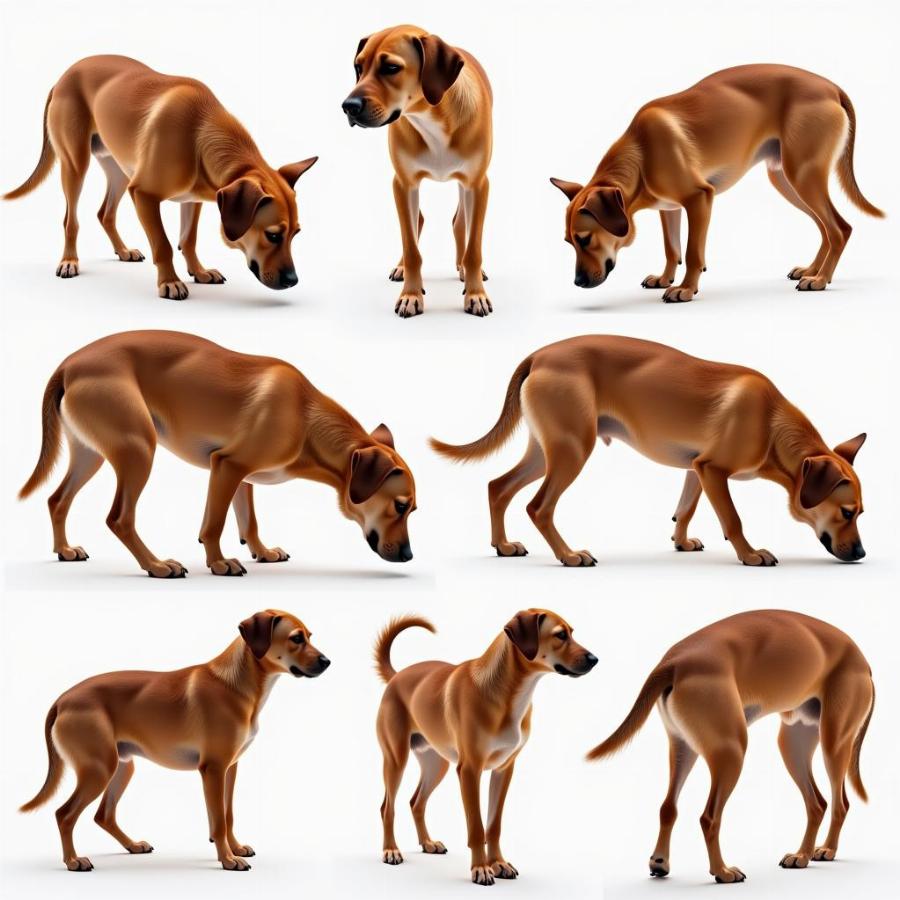The stifle joint in dogs, often referred to as the dog’s knee, is a complex and crucial joint responsible for a dog’s ability to walk, run, and jump. Understanding its anatomy, common injuries, and proper care is vital for every dog owner, ensuring a happy and active life for your furry companion. This article dives deep into the intricacies of the canine stifle joint, providing you with valuable knowledge to keep your dog’s legs healthy and strong.
Anatomy of the Canine Stifle Joint
The stifle joint isn’t a simple hinge like our knees. It’s a complex structure formed by the femur (thigh bone), tibia (shin bone), patella (kneecap), and fibula. Crucial ligaments, like the cranial cruciate ligament (CCL) and caudal cruciate ligament, provide stability. The menisci, C-shaped cartilages, act as shock absorbers between the femur and tibia. This intricate design allows for a wide range of motion while supporting the dog’s weight.
Common Stifle Joint Problems in Dogs
Just like human knees, the stifle joint in dogs is susceptible to injuries and diseases. Cranial Cruciate Ligament (CCL) rupture is the most common stifle injury, often caused by sudden twisting or trauma. stifle in dogs Other issues include luxating patella (dislocated kneecap), meniscal tears, and arthritis. These conditions can cause pain, lameness, and reduced mobility.
“Early diagnosis is crucial for successful treatment of stifle joint issues,” says Dr. Emily Carter, DVM, specializing in canine orthopedics. “Regular check-ups and paying attention to your dog’s gait can help identify problems early on.”
Recognizing Stifle Joint Issues in Your Dog
Recognizing the signs of a stifle joint problem is crucial. Look out for limping, difficulty rising, swelling around the joint, clicking or popping sounds, and reluctance to exercise. If you notice any of these signs, consult a veterinarian immediately. anatomy of a dog's rear leg Early intervention can prevent further damage and improve your dog’s long-term prognosis.
 Signs of Stifle Joint Problems in Dogs
Signs of Stifle Joint Problems in Dogs
Treatment Options for Stifle Joint Problems
Treatment options vary depending on the severity and type of injury. Conservative management, such as rest, medication, and physical therapy, can be effective for mild cases. Surgical intervention might be necessary for more severe injuries, like CCL ruptures. anatomy of dog knee Your veterinarian will recommend the best course of action based on your dog’s specific needs.
Preventing Stifle Joint Injuries in Dogs
While not all injuries are preventable, several measures can reduce the risk. Maintaining a healthy weight for your dog is crucial, as excess weight puts added stress on the joints. Regular exercise, avoiding sudden, high-impact activities, and providing a supportive environment can also help prevent injuries.
Conclusion
The stifle joint plays a vital role in your dog’s mobility and overall well-being. Understanding its anatomy, common problems, and preventative measures empowers you to provide the best care for your furry friend. By staying informed and proactive, you can help your dog enjoy a happy, active life, free from the pain and limitations of stifle joint issues. Remember to consult your veterinarian at the first sign of a problem for early diagnosis and treatment. meniscus injury in dogs
FAQ
- What is the most common stifle joint injury in dogs? Cranial Cruciate Ligament (CCL) rupture.
- How can I tell if my dog has a stifle joint problem? Look for limping, swelling, difficulty rising, and reluctance to exercise.
- Is surgery always necessary for stifle joint injuries? No, conservative management might suffice for mild cases.
- How can I prevent stifle joint injuries in my dog? Maintain a healthy weight, provide regular exercise, and avoid high-impact activities.
- What is the recovery time after stifle joint surgery? Recovery time varies depending on the procedure and individual dog, but typically takes several weeks to months.
- Can arthritis affect the stifle joint? Yes, arthritis is a common cause of stifle joint pain and stiffness.
- Are certain breeds more prone to stifle joint problems? Yes, larger breeds and those with specific conformations are more susceptible.
Beaut Dogs is your trusted source for comprehensive information on all aspects of dog ownership. We are dedicated to providing expert advice, practical tips, and valuable resources to help you care for your canine companion. For personalized guidance and support, contact us via Email: [email protected]. Beaut Dogs is here to help you navigate the wonderful world of dog ownership and ensure a happy, healthy life for your beloved pet.